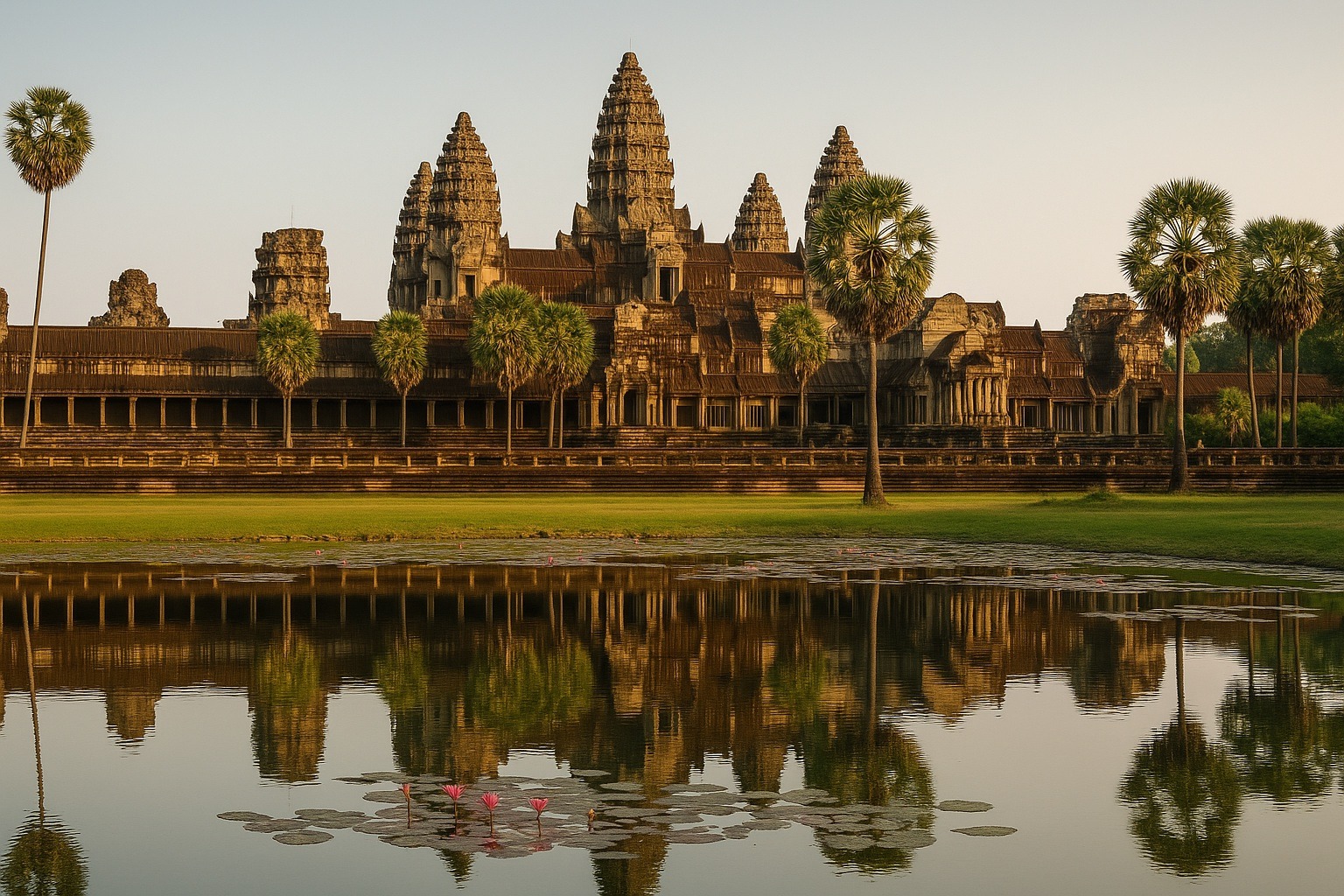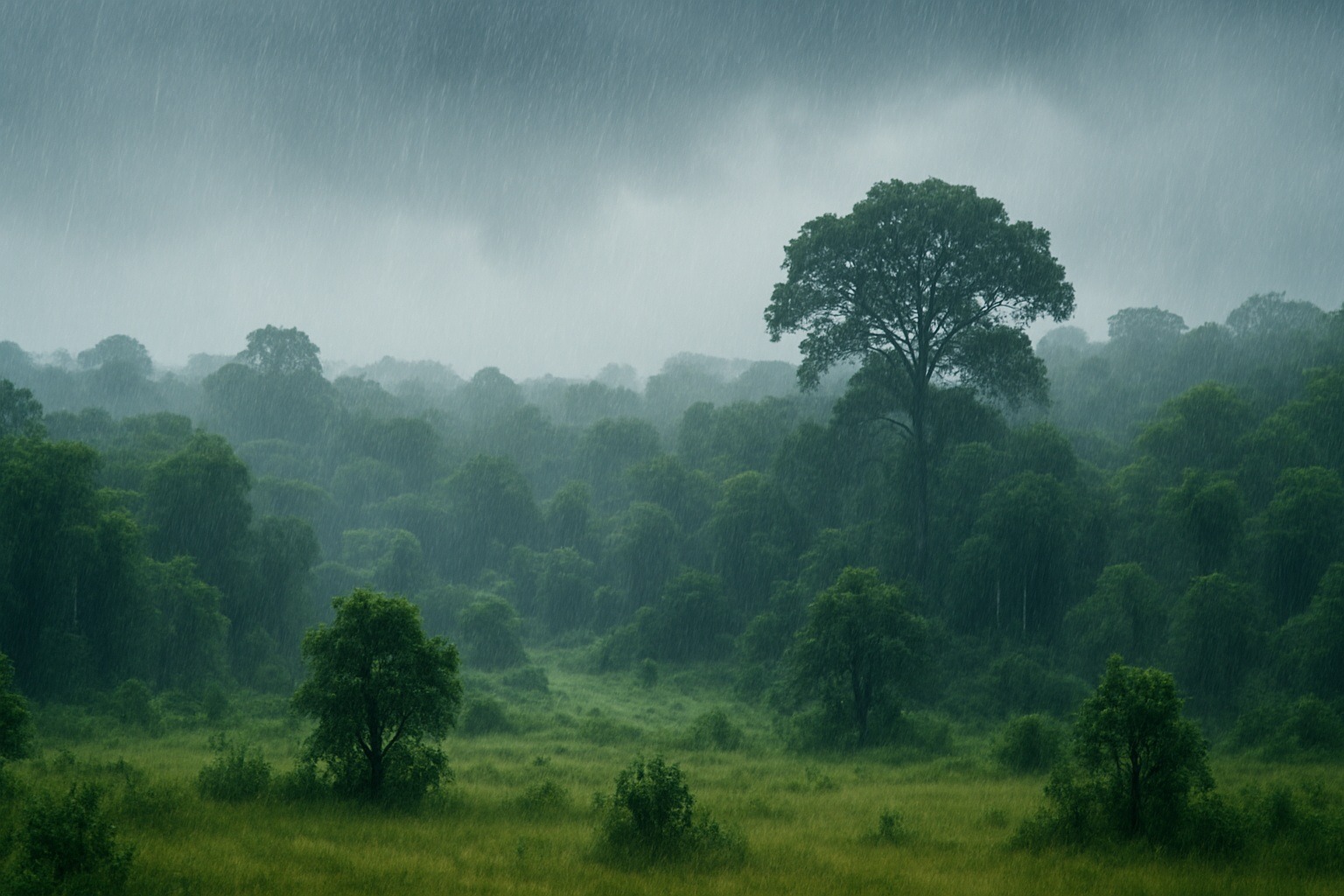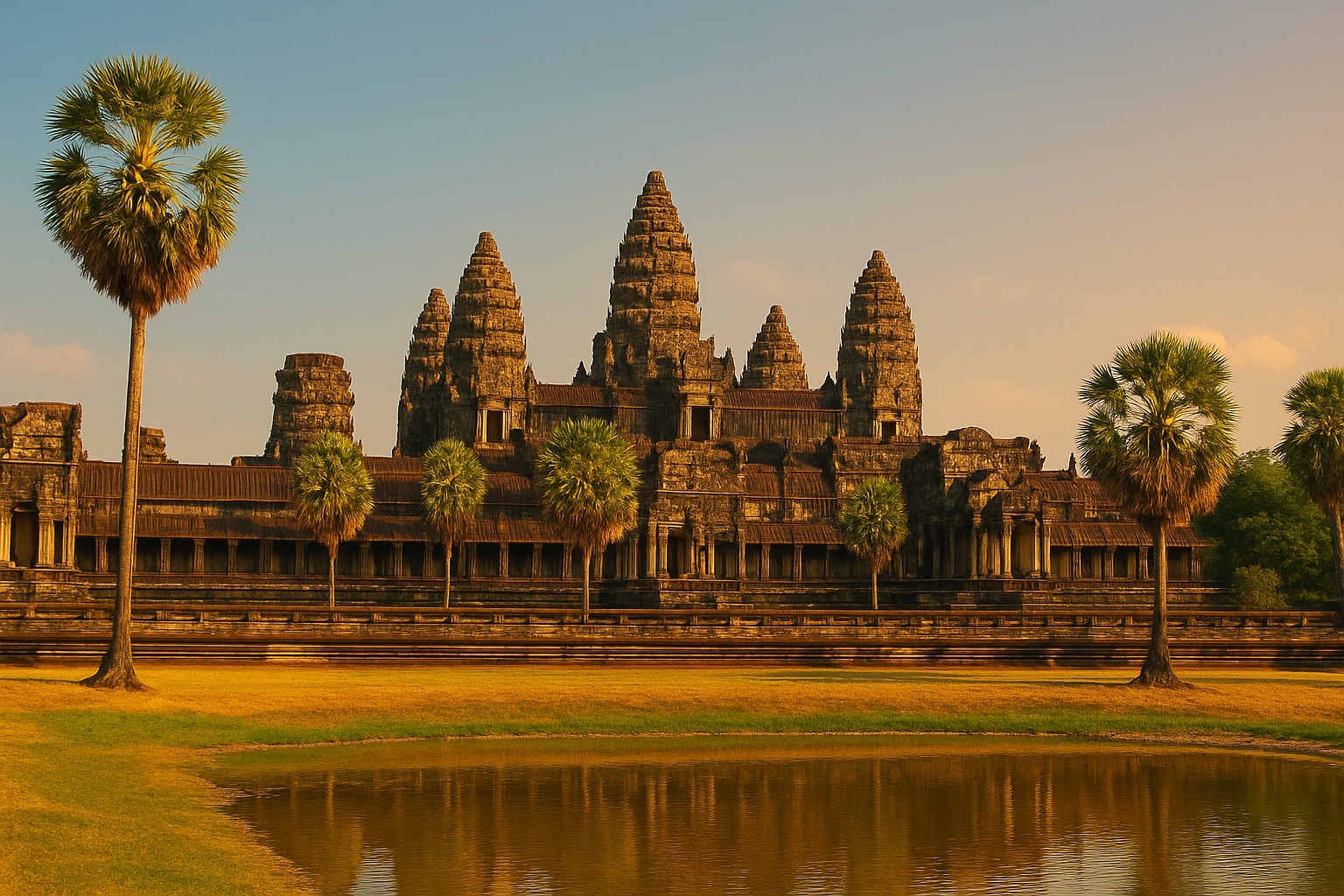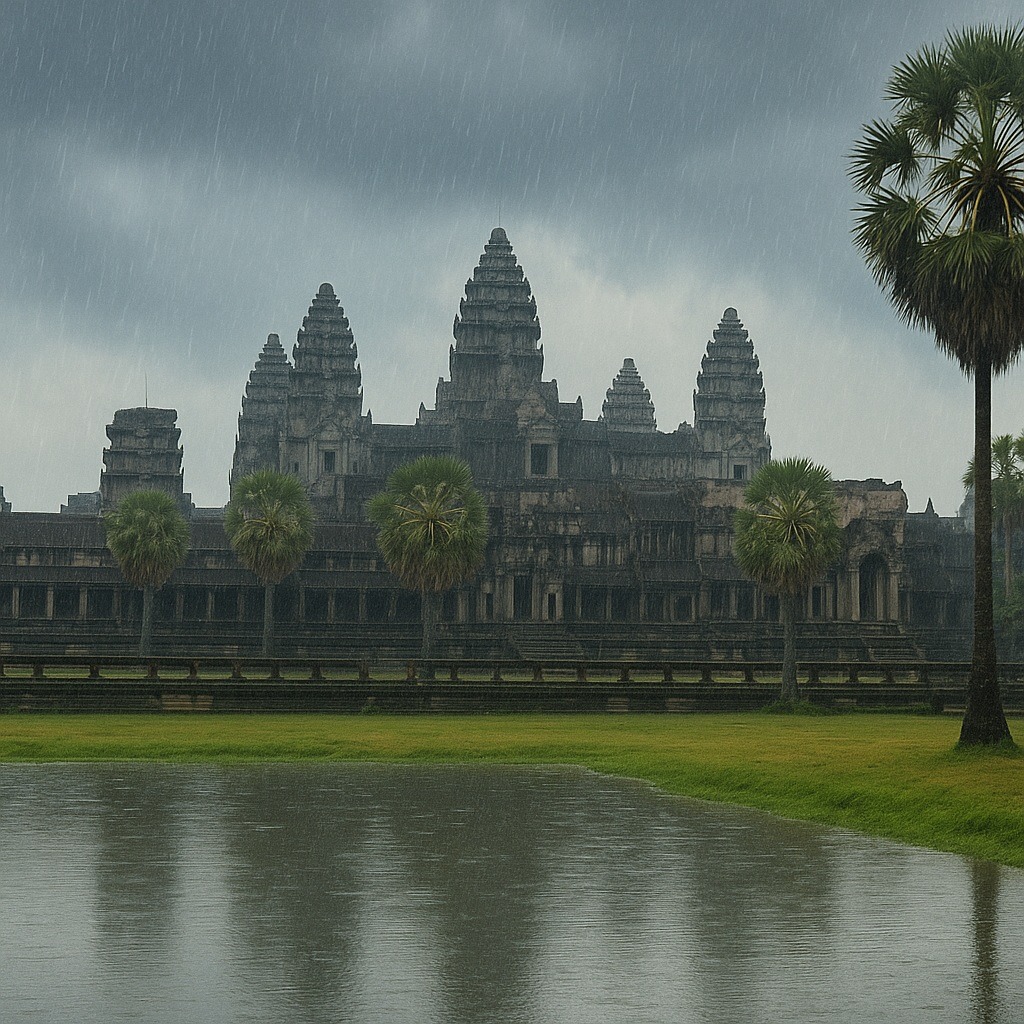Cambodia is located in the tropical climate zone of Southeast Asia and has hot and humid weather throughout the year. The country is generally divided into two main seasons: the dry season (November–April) and the rainy season (May–October). These climatic differences are an important factor that directly affects travel plans for tourists wishing to visit Cambodia. Especially known for its historical Angkor Wat temples and natural beauty, the country offers a much more comfortable travel experience during certain times of the year.
The ideal period to visit Cambodia is generally between November and February, which corresponds to the dry season. During this time, temperatures are more moderate and rainfall is quite low, creating favorable conditions for both city exploration and outdoor activities. On the other hand, the heavy monsoon rains of the rainy season can cause roads in rural areas to become muddy and make transportation difficult. However, this period when nature comes alive can also be an alternative for travelers seeking green landscapes and less tourist density.
Which months are the best time to visit Cambodia?

The best time to visit Cambodia is the dry season, which lasts from November to February. During this period, temperatures typically range between 25–30°C, and rainfall is minimal. Especially in December and January, when cool breezes are felt and humidity is low, it is an excellent time to explore outdoor historical sites such as Angkor Wat. Since the weather conditions in tourist areas are comfortable, activities like walking, cycling tours, or river cruises can be easily carried out.
The only disadvantage of this period is the tourist crowds. Especially during special times like New Year holidays and Chinese New Year, crowds increase in hotels and popular spots, and prices rise. Therefore, it is advisable to make reservations in advance and visit popular sites early in the day when planning your trip. Overall, the period between November and February is the most suitable time to visit Cambodia in terms of both climate and reliability.
Which months does the dry season last from and until?

In Cambodia, the dry season lasts from November to April. During this period, the influence of monsoon winds decreases, and the amount of rainfall drops significantly. The weather is generally clear, sunny, and less humid. Especially November, December, and January are the coolest months of the year, with temperatures ranging between 25–30°C. This provides a very comfortable environment for those who want to explore the country. Activities such as temple visits, nature walks, and beach holidays can be easily enjoyed during the dry season.
With February and March, temperatures begin to rise; April is generally known as the hottest month of the year. However, due to the near absence of rain, this period is still suitable for visitors planning outdoor activities. Roads are more accessible during the dry season, and transportation, especially in rural areas, becomes smoother. Therefore, the dry season is the most suitable time to visit Cambodia in terms of both weather conditions and logistics.
Which months does the rainy season occur in?

In Cambodia, the rainy season generally lasts from May to October. During this period, the southwest monsoons are active, and heavy rainfall is seen across the country. Especially in June, July, August, and September, the rains are more frequent and intense. During these months, temperatures usually range between 28–32°C, but due to high humidity, the perceived temperature can be higher. Rain typically falls in short but intense bursts in the afternoon, which allows for outdoor activities in the morning hours.
The rainy season is a time when nature comes alive and the green landscapes are at their most vibrant. Rice fields fill with water, rivers swell, and the scenery in rural areas becomes more impressive. However, heavy rains can cause roads in some regions to become muddy and transportation more difficult. Despite this, lower tourist crowds and more affordable prices make this period a viable option. The visual richness of the rainy season can be very appealing for travelers interested in photography, cultural exploration, and spending time in nature.
Is it suitable to visit Cambodia in February?

Yes, February is a very suitable time to visit Cambodia. This period falls in the middle of the dry season and usually offers clear, sunny days with low humidity. Daytime temperatures average around 28–32°C, and rainfall is almost nonexistent. This creates a highly favorable environment for both cultural excursions and nature activities. Especially for those planning to visit large historical sites like Angkor Wat, the temperature levels are not overly overwhelming.
There may be some crowding in tourist areas in February, as it is one of the peak times for visitors to Cambodia. However, this can be easily managed with well-organized travel plans. Starting tours early in the day and making accommodation and transport reservations in advance can make the trip more comfortable. Overall, February is an ideal choice for visiting Cambodia in terms of both weather conditions and travel convenience.
How hot can it get in Cambodia between March and June?

Between March and June, the weather in Cambodia can be quite hot and oppressive. Starting in March, temperatures begin to rise, and April is generally considered the hottest month of the year. During this period, daytime temperatures often exceed 35°C and can reach as high as 38–40°C on some days. The high humidity further increases the perceived heat. Staying outdoors for extended periods, especially around midday, can be challenging, so travelers are advised to drink plenty of water, wear light clothing, and protect themselves from the sun.
May and June mark the beginning of the rainy season alongside the hot weather. Although the temperatures remain high during these months, short afternoon showers provide some relief. However, since intense heat and sudden rains occur together, it is important for travel plans to remain flexible. The March–June period may be suitable for those who enjoy hot climates and want to avoid crowds, but it should be noted that it is also a physically demanding time.
Is it reasonable to visit Cambodia during the rainy season?

Visiting Cambodia during the rainy season can be a reasonable choice for many travelers despite some disadvantages. Between May and October, this period features heavy but short afternoon rains. However, most of the day is usually clear or lightly cloudy, allowing for comfortable sightseeing in the morning. As the rains revive nature, the surroundings of temples and rural areas are covered in the most vibrant shades of green. Historical sites like Angkor Wat become more photogenic, and tourist crowds decrease significantly.
During this period, prices for hotels, tours, and transportation services are also lower, offering an advantage for budget-conscious travelers. Of course, due to the rain, some roads may become muddy or flooded; however, with appropriate clothing, waterproof gear, and a flexible schedule, these challenges can be easily managed. For those seeking tranquility, a chance to connect with nature, and economical options, the rainy season offers a meaningful opportunity to discover a different side of Cambodia.
What are the ideal months to visit Angkor Wat?

The ideal time to visit Angkor Wat is during the dry season between November and February. During these months, the weather is generally clear, sunny, and rain-free, with temperatures ranging between 25–30°C. These conditions are very favorable for visitors who want to take long walks and explore vast open areas like Angkor Wat. Additionally, the low humidity makes exploring the temples a less tiring experience. Visiting early in the morning offers the advantage of avoiding crowds and enjoying cooler temperatures.
The November–February period also offers stunning sunrise views. Watching the famous silhouette of Angkor Wat in the first light of the morning becomes even more impressive thanks to the mostly cloudless skies during this season. However, this is also the peak tourist season in Cambodia. Therefore, it is advisable to book hotels in advance and arrive at the temples early. Despite this, due to the favorable weather and visual appeal, these months are considered the most preferred and ideal time to visit Angkor Wat.
When does the monsoon season usually begin?
In Cambodia, the monsoon rains usually begin in May. During this period, moist air masses reach the country under the influence of the southwest monsoons, and rainfall increases. At first, the rains are short and light, but as the month progresses, the showers become more frequent and intense. Afternoon rains in particular offer brief relief from the heat during this hot time of year. May is considered a transitional period marking the end of the dry season and the official beginning of the rainy season.
With the onset of the monsoon rains, nature also begins to come alive. Trees that had dried out during the dry season start to turn green again, rice fields begin to fill with water, and rural landscapes gain vitality. However, during this period, some roads may become muddy and accessing rural areas can be more difficult. Still, for travelers seeking a nature-rich atmosphere, the monsoon season starting in May can be an appealing time to discover a different and tranquil side of Cambodia.
